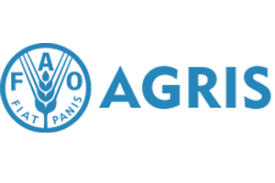Marine benthic macroalgae from Manguinhos beach, Itaparica, Bahia, Brazil
Palavras-chave:
Floristics, Itaparica Island, Northeast BrazilResumo
Abstract: The State of Bahia has the longest coastline in Brazil (1,103 km), characterized by oligotrophic waters and a wide variety of substrates occurring in diverse coastal environments, such as sandy beaches, organogenic reefs, sandstone formations, rocky shores, and mangroves. These features favor the richness and diversity of marine macroalgae in the region. This study presents the first floristic inventory of benthic marine macroalgae from Manguinhos Beach, located in the municipality of Itaparica, contributing to the knowledge of marine macroalgal biodiversity in the State of Bahia. Sampling was conducted during low spring tides between September 2014 and April 2017, totaling 18 collections. A total of 85 infrageneric taxa were identified, comprising 46 Rhodophyta, 18 Ochrophyta, and 21 Chlorophyta, distributed across 18 orders, 33 families, and 56 genera. Rhodophyta represented the highest proportion of taxa (54.12%) compared with Ochrophyta (21.17%) and Chlorophyta (24.71%), corroborating the pattern that red algae are the most abundant group in tropical regions, as also observed in the subtropical and tropical western Atlantic. Nevertheless, further floristic surveys at additional beaches are imperative to encompass other areas of Itaparica Island, as well as other island systems in the state, many of which still represent significant gaps in the study of algal biodiversity.
Keywords: Algae, Tropical Island, Northeast Brazil.
Downloads
Referências
Almeida, W. R. (2013). Macroalgas Marinhas bentônicas da Ilha Bimbarras, Região Norte da Baía de Todos os Santos, Bahia, Brasil. Dissertação de Mestrado, Universidade Estadual de Feira de Santana, Feira de Santana, BA, Brasil.
Almeida, W. R., et al. (2012). Cladophorales and Siphonocladales (Chlorophyta) from Bimbarras Island, Todos os Santos Bay, Bahia State, Brazil. Iheringia, Séria Botânica, 67 (2), 149-164.
Altamirano, M. & Nunes, J. M. C. (1997). Contribuiciones al macrofitobentos del município de Camaçari (Bahia, Brasil). Acta Botanica Malacitana, 22, 211-215. DOI: 10.24310/abm.v22i0.8639
Amado-Filho, G.M., et al. (2010). Seaweed diversity associated with a Brazilian tropical rhodolith bed. Ciencias Marinas, 36, 371-391. DOI: https://doi.org/10.7773/cm.v36i4.1782
Amorim, P. R. R., Moura, C. W. N. & Moniz-Brito, K.L. (2006). Estudo morfo-taxonômico das espécies de Halimeda, Penicillus e Udotea (Bryopsidales, Chlorophyta) do Recife de Franja da Ilha de Itaparica, Bahia. Congresso Brasileiro de Ficologia e Simpósio Latino-Americano Sobre Algas Nocivas, Itajaí, SC, Brasil, 11.
Bahia (Governo do Estado). Secretaria da Cultura e Turismo. (1999). Programa de desenvolvimento turístico da Bahia – oportunidades de investimento (67p). Salvador: SUDETUR.
Bermejo, R., Vergara, J. J. & Hernández, I. (2012). Application and reassessment of the reduced species list index for macroalgae to assess the ecological status under the Water Framework Directive in the Atlantic coast of Southern Spain. Ecological Indicators, 12 (1), 46-57. DOI: 10.1016/j.ecolind.2011.04.008.
Borowitska, M.A. (1972). Intertidal algae diversity and the effect of pollution. Australian Journal of Marine and Freshwater Research, 23 (2), 73-84.
Caires, T. A. et al. (2013). Evaluation of the Stocks of Hypnea musciformis (RhodophytaGigartinales) on Two Beaches in Bahia, Brazil. Brazilian Journal of Oceanography, 61(1), 65-71. DOI: 10.1590/S1679-87592013000100007.
Cassano V., et al. (2019). Laurencia longiramea sp. nov. for Brazil and an emendation of the generic delineation of Corynecladia (Ceramiales, Rhodophyta). Phycologia, 58 (1), 115-127. DOI: 10.1080/00318884.2018.1523519.
Costa, I. O., et al. (2012). Macroalgas bentônicas associadas a bancos de Hypnea musciformis (Wulfen) J.V. Lamour. (Rhodophyta – Gigartinales) em duas praias do litoral baiano. Acta Botanica Brasilica, 26 (2), 493-507. DOI: 10.1590/S0102-33062012000200025.
Costa, I. O., et al. (2019). Reef-building coralline algae from the southwest Atlantic: filling gaps with the recognition of Harveylithon (Corallinaceae, Rhodophyta) on the Brazilian coast. Journal of Phycology, 55 (6), 1370-1385. DOI: 10.1111/jpy.12917.
Figueiredo, M. A. O., et al.. (2008). Benthic marine algae of the coral reefs of brazil: a literature review. Oecologia brasiliensis, 12 (2), 258-269. DOI: 10.4257/oeco.2008.1202.07.
Guimarães, S. M. P. B. (2003). Uma análise da diversidade da flora marinha bentônica do estado do Espírito Santo, Brasil. Hoehnea, 30 (1), 11-19.
Guiry, M. D. & Guiry, G.M. (2025). AlgaeBase. World-wide electronic publication [Programa de computador] Ireland: University of Galway. Recuperado em 31 março, 2025 de http://www.algaebase.org.
Horta, P. A., et al. (2008). Composição e estrutura do fitobentos do infralitoral da Reserva Biológica Marinha do Arvoredo, Santa Catarina, Brasil - implicações para a conservação. Oecologia Brasiliensis, 12 (2), 6. DOI: 10.4257/oeco.2008.1202.06.
Jardim Botânico do Rio de Janeiro. (2025). Flora e Funga do Brasil. Jardim Botânico do Rio de Janeiro: Reflora. Recuperado em 31 março, 2025 de http://floradobrasil.jbrj.gov.br/.
Jesus, P. B., Schnadelbach, A. S. & Nunes, J. M. C. (2013a). O gênero Hypnea (Cystocloniaceae, Rhodophyta) no litoral do estado da Bahia, Brasil. Sitientibus Série Ciências Biológicas, 13 (1), 1-21. DOI: 10.13102/scb215.
Jesus, P. B., Guimarães, S. M. P. B. & Nunes, J. M. C. (2013b) Hypnea platyclada a new species of red alga (Rhodophyta, Cystocloniaceae) from Brazil. Phytotaxa, 85 (1), 26-34. DOI: 10.11646/phytotaxa.85.1.4.
Jesus, P. B., et al. (2016). Species-delimitation and phylogenetic analyses of some cosmopolitan species of Hypnea (Rhodophyta) reveal synonyms and misapplied names to H. cervicornis, including a new species from Brazil. Journal of Phycology, 52 (5), 774-792. DOI: 10.1111/jpy.12436.
Jesus, P. B., et al. (2019). Species delimitation methods reveal cryptic diversity in the Hypnea cornuta complex (Cystocloniaceae, Rhodophyta). European Journal of Phycology, 54 (2), 135-153. DOI: 10.1080/09670262.2018.1522454.
Leão, Z. M. A.N. (1996). The coral reefs of Bahia: morphology, distribution and the major environmental impacts. Anais de Academia Brasileira de Ciências, 68 (3), 439-452.
Leão, Z. M., Kikuchi, R. K., & Testa, V. (2003). Corals and coral reefs of Brazil. In Latin American coral reefs (pp. 9-52). Elsevier Science. DOI: 10.1016/B978-044451388-5/50003-5.
Littler, D.S. & Littler, M.M. (2000). Caribbean Reef Plants. Washington: Offshore Graphics.
Lucio, A. M. & Nunes, J. M. C. (2002). Aportación al conocimiento fenológico de las rodofíceas marinas de la playa de Guarajuba (Camaçari, Bahia) Brasil. Botanica Complutensis, 26, 17-34.
Lüning, K. (1990). Seaweeds: their environment, biogeography, and ecophysiology. John Wiley & Sons.
Lyra, G.M., et al. (2015). Phylogeny of Gracilariaceae (Rhodophyta): evidence from plastid and mitochondrial nucleotide sequences. Journal of Phycology, 51 (2), 356–366. DOI: 10.1111/jpy.12281.
Lyra, G.M., et al. (2016). Delimitating cryptic species in the Gracilaria domingensis complex (Gracilariaceae, Rhodophyta) using molecular and morphological data. Journal of Phycology, 52 (6), 997-1017. DOI: 10.1111/jpy.12456.
Marins, B. V., et al. (2008). Subtidal benthic marine algae of the Todos os Santos Bay, Bahia State, Brazil. Oecologia brasiliensis, 12 (2), 230- 243. DOI: 10.4257/oeco.2008.1202.05.
Moura, C. W. N., et al. (2015). Checklist of phytobenthos from Boipeba Island, Bahia, Brazil, emphasizing the morphological features of Nitophyllum punctatum (Rhodophyta, Ceramiales). Check List, 11(4), 1704. DOI: 10.15560/11.4.1704.
Nunes, J. M. C. (1997). Hypneaceae, Rhodymeniaceae, Ceramiaceae e Rhodomelaceae (Rhodophyta) das praias de Placafor e Itapoã, município de Salvador, Bahia, Brasil. Biotemas, 10 (2), 61-75.
Nunes, J. M. C. (1998). Catálogo de algas marinhas bentônicas do estado da Bahia, Brasil. Acta Botanica Malacitana, 23, 5-21. DOI: 10.24310/abm. v23i0.8547.
Nunes, J. M. C. (2010). Taxonomia morfológica: metodologia de trabalho. Macroalgas, uma introdução à taxonomia. Rio de Janeiro: Technical Books, p. 54-70.
Nunes, J. M. C.& Paula, E. J. (2000). Estudos taxonômicos do gênero Padina Adanson (Dictyotaceae – Phaeophyta) no litorla do estado da Bahia, Brasil. Acta Botanica Malacitana, 25, 21-43. DOI: 10.24310/abm. v25i0.8470.
Nunes, J. M. C. & Paula, E. J. (2001). O gênero Dictyota Lamouroux (Dictyotaceae – Phaeophyta) no litoral do estado da Bahia, Brasil. Acta Botanica Malacitana, 26, 5-18. DOI: 10.24310/abm.v26i0.7375.
Nunes, J. M. C. & Paula, E. J. (2004). Estudos taxonômicos de Ectocarpaceae e Ralfsiacae (Phaeophyta) da região metropolitana de Salvador, BA, Brasil. Acta Biologica Leopoldensia, 26 (1), 37-50.
Nunes, J. M. C. & Paula, E. J. (2006). O gênero Dictyopteris J. V. Lamour. (Dictyotaceae - Phaeophyta) no estado da Bahia, Brasil. Hidrobiológica, 16 (3), 251-258.
Nunes, J. M. C. et al. (1999). Algas marinhas bentônicas do município de Ilhéus, Bahia, Brasil. Acta Botanica Malacitana, 24, 5-12. DOI: 10.24310/abm.v24i0.8512.
Pestana, E. M. S. et al. (2020). Integrative approach reveals underestimated Peyssonneliales diversity in Brazil: registering the first occurrence of Ramicrusta and Incendia, with the description of three new species. Phytotaxa, 439 (1), 39-55. DOI: 10.11646/phytotaxa.439.1.2.
Santos, G. N. & Nunes, J. M. C. (2014). Udoteaceae (Bryopsidales, Chlorophyta) no litoral do estado da Bahia, Brasil. Sitientibus Série Ciências Biológicas, 14, 1-21. DOI: 10.13102/scb436.
Santos, G. N. & Nunes, J. M. C. (2015a). O gênero Halimeda (Bryopsidales, Chlorophyta) no litoral do estado da Bahia, Brasil. Sitientibus Série Ciências Biológicas, 15, 1-17. DOI: 10.13102/scb695.
Santos, G. N. & Nunes, J. M. C. (2015b). True identity of Avrainvillea and Rhipilia (Bryopsidales, Chlorophyta) from the coast of Bahia, Brazil. Phytotaxa, 213 (2), 71-86. DOI: 10.11646/phytotaxa.213.2.1.
Santos, G. N. et al. (2013). Análise quali-quantitativa das algas arrinadas do norte do estado da Bahia, Brasil. Acta Botanica Malacitana, 38, 13-24.
Santos, G. N. et al. (2020). Diversity of Galaxauraceae (Nemaliales, Rhodophyta) in northeastern Brazil: new record and two new species, Dichotomaria viridis sp. nov. and Tricleocarpa laxa sp. nov. Phytotaxa, 454 (2), 73-103. DOI: 10.11646/phytotaxa.454.2.1.
Santos, C.C., et al. (2022). Taxonomic changes in the Lomentariaceae (Rhodymeniales, Rhodophyta): Yendoa gen. nov. and Ceratodictyon sanctae-crucis sp. nov. Phycologia, 64 (1), 19-28. DOI: 10.1080/00318884.2022.2133269.
Steneck, R.S. & Dethier, M.N. (1994). A functional group approach to the structure of algal-dominated communities. Oikos, 69 (3), 476-498. DOI: 10.2307/3545860.
Yoneshigue-Valentin, Y., Gestinari, L. M. S. & Fernandes, D. R. P. (2006). Macroalgas. In: Lavrado H.P. & Ignácio, B. L. (Ed.) Biodiversidade bentônica da região central da Zona Econômica Exclusiva brasileira (Série Livros, n. 18, capítulo 2, p. 67). Rio de Janeiro: Museu Nacional.
Downloads
Publicado
Como Citar
Licença
Autores que publicam nesta revista concordam com os seguintes termos:- Autores mantém os direitos autorais e concedem à revista o direito de primeira publicação, com o trabalho simultaneamente licenciado sob a Licença Creative Commons Attribution que permite o compartilhamento do trabalho com reconhecimento da autoria e publicação inicial nesta revista.
- Autores têm autorização para assumir contratos adicionais separadamente, para distribuição não-exclusiva da versão do trabalho publicada nesta revista (ex.: publicar em repositório institucional ou como capítulo de livro), com reconhecimento de autoria e publicação inicial nesta revista.







